Feed conversion ratio (FCR) is the ratio or rate measuring the total used feed and the total weight of shrimp harvested per unit area. Increasing feed efficiency through reduced FCR is therefore important to reduce costs and improve the economic benefits for shrimp farmers.
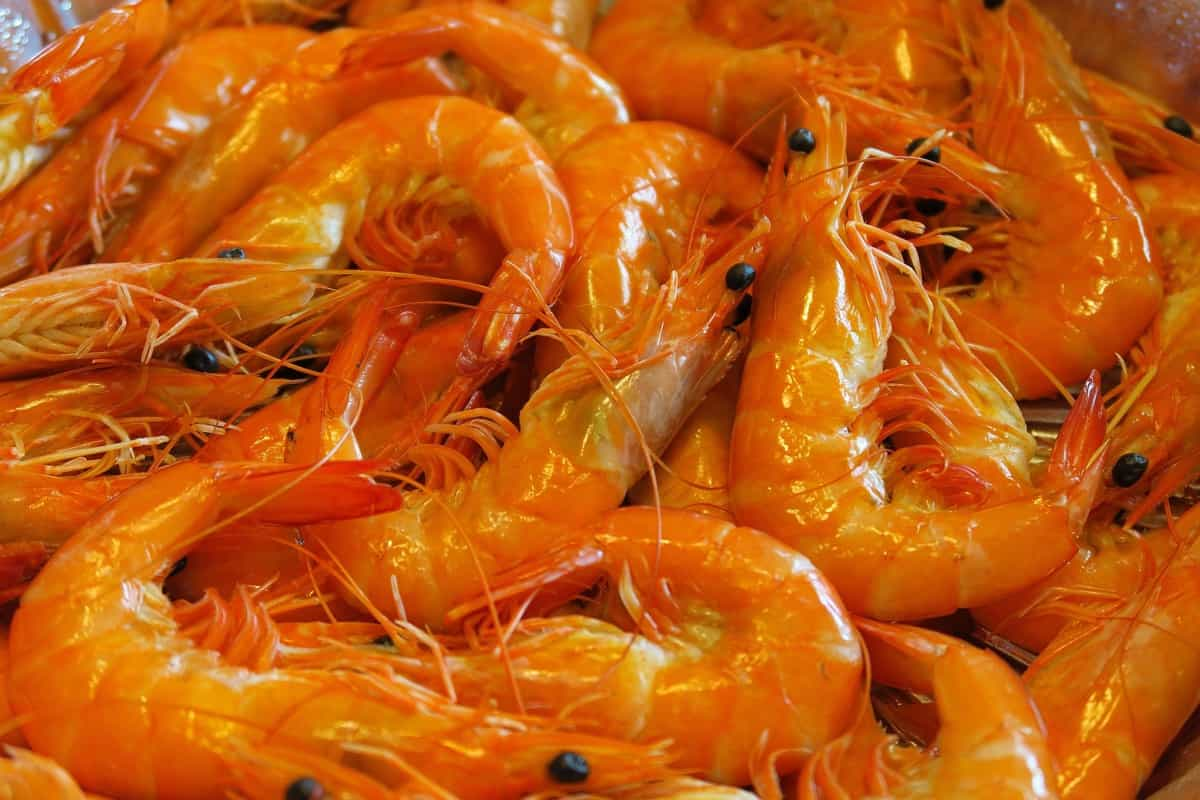
Key rules to improve Feed Conversion Ratio (FCR) in shrimp culture
Tips to get optimum FCR in shrimp culture
A few key methods can be employed to help shrimp farmers get the optimum FCR in their shrimp culture operations. One method is to use proper stocking density. This means not overcrowding the ponds and using the correct number of shrimps per square meter. Another technique is to employ good pond management practices such as providing adequate aeration, maintaining good water quality, and ensuring enough food is available for the shrimp.
Secrets to getting optimum FCR to include using high-quality feeds that are properly nutritionally balanced and selecting the right strains of shrimp for your operation. Tips for success include monitoring FCR regularly and adjusting management practices as needed. Another way to improve FCR is by improving the quality of your feeds. This means using feeds that are high in protein and have all the necessary nutrients for shrimp growth.
It also means using feeds that are easy for shrimp to digest and assimilate. Another way to improve FCR is by reducing the amount of waste produced by shrimp. This can be done by improving water quality, aeration, and other waste management methods.Finally, the other way to reduce FCR is by increasing the growth rate of shrimp. This can be done by providing optimal conditions for shrimp growth, such as temperature, salinity, and pH levels.
In case you missed it: How to Start Shrimp Farming in Nigeria: Business Plan, Types of Shrimp, Cost, Profit, and Management
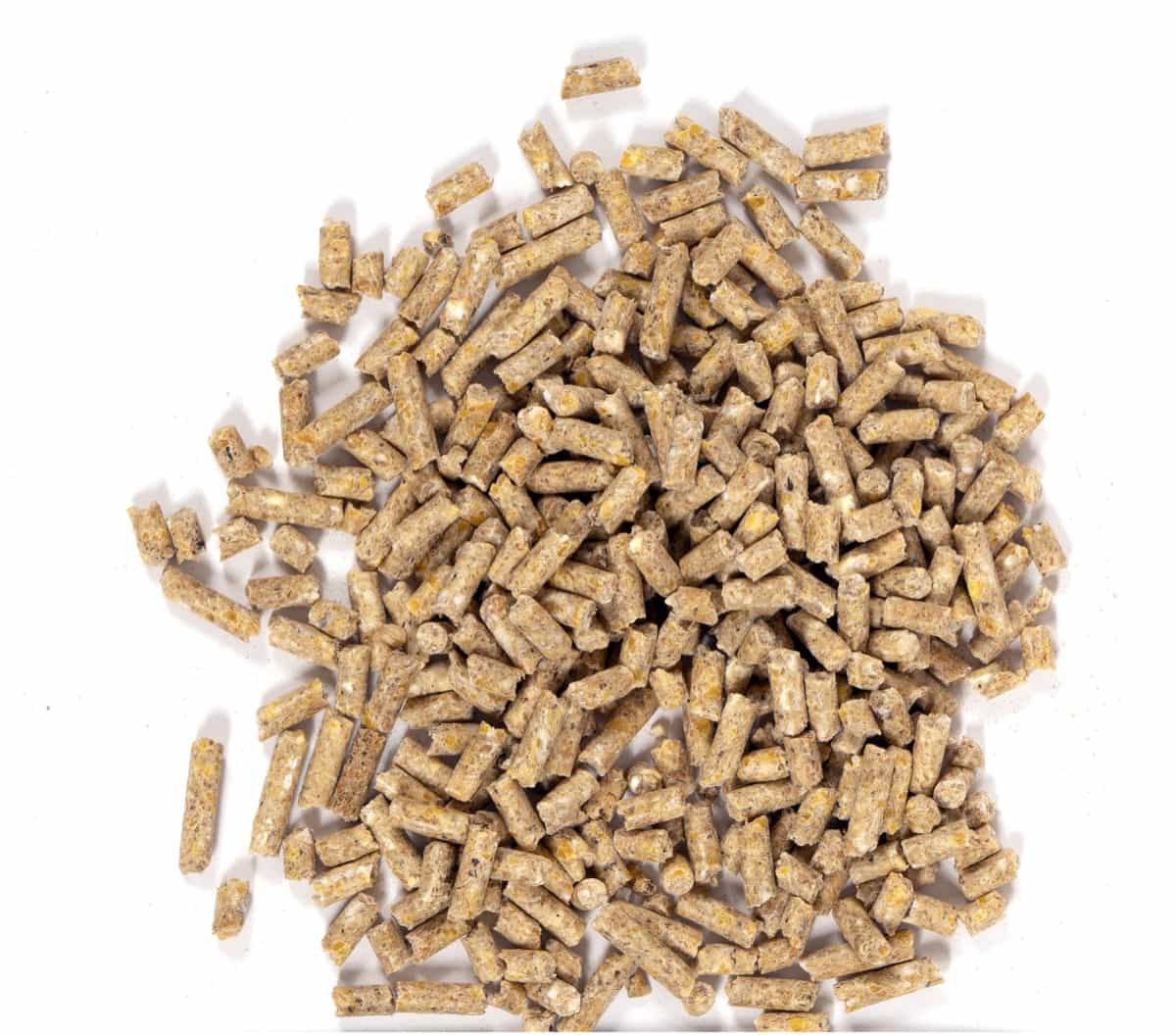
Techniques to get optimum FCR in shrimp culture
Use high-quality feeds
These are the most important factors affecting FCR. Use feeds rich in protein and other nutrients for better growth and survival of shrimp. The type of food you feed your shrimp can have a big impact on FCR. Shrimp require a diet high in protein but low in carbohydrates. A diet that meets these requirements will help the shrimp grow faster and stay healthy, leading to improved FCR. This means using feed that has a higher protein content and is more easily digestible. Another way to improve the FCR is to ensure that the shrimp have access to enough food. This means feeding them more or increasing the food amount per feeding.
Manage water quality
Good water quality is necessary for the health of shrimp. Maintain proper dissolved oxygen levels, pH, temperature, and ammonia levels in the rearing water to ensure optimum growth and FCR. One of the most important factors in shrimp culture is water quality. Ammonia and nitrite levels should be kept low, and dissolved oxygen levels should be high. Shrimp are very sensitive to environmental changes, so maintaining good water quality is essential for good FCR.
Control disease
Prevention in shrimp is always better than cure for controlling diseases in shrimp culture. Use prophylactic measures such as vaccination to prevent disease outbreaks. If the disease does occur, treat it immediately to minimize mortalities and improve FCR.
Optimize stocking density
Overcrowding can lead to poor FCR as shrimp compete for food and space. The optimum stocking density will change depending on the cultured shrimp type, but lower stocking densities are generally better for FCR optimization. Some tips to optimize feeding practices include:
- Feed at regular intervals throughout the day
- Avoid overfeeding
- Ensure that all shrimp have access to food
Use probiotics
Probiotics are live microorganisms and provide health benefits to the shrimp. Probiotics can improve digestive function and help the shrimp better utilize the nutrients in their food. This can lead to improved FCR.
In case you missed it: How to Start Shrimp/Prawn Farming from Scratch: Check How this Guide Helps Beginners
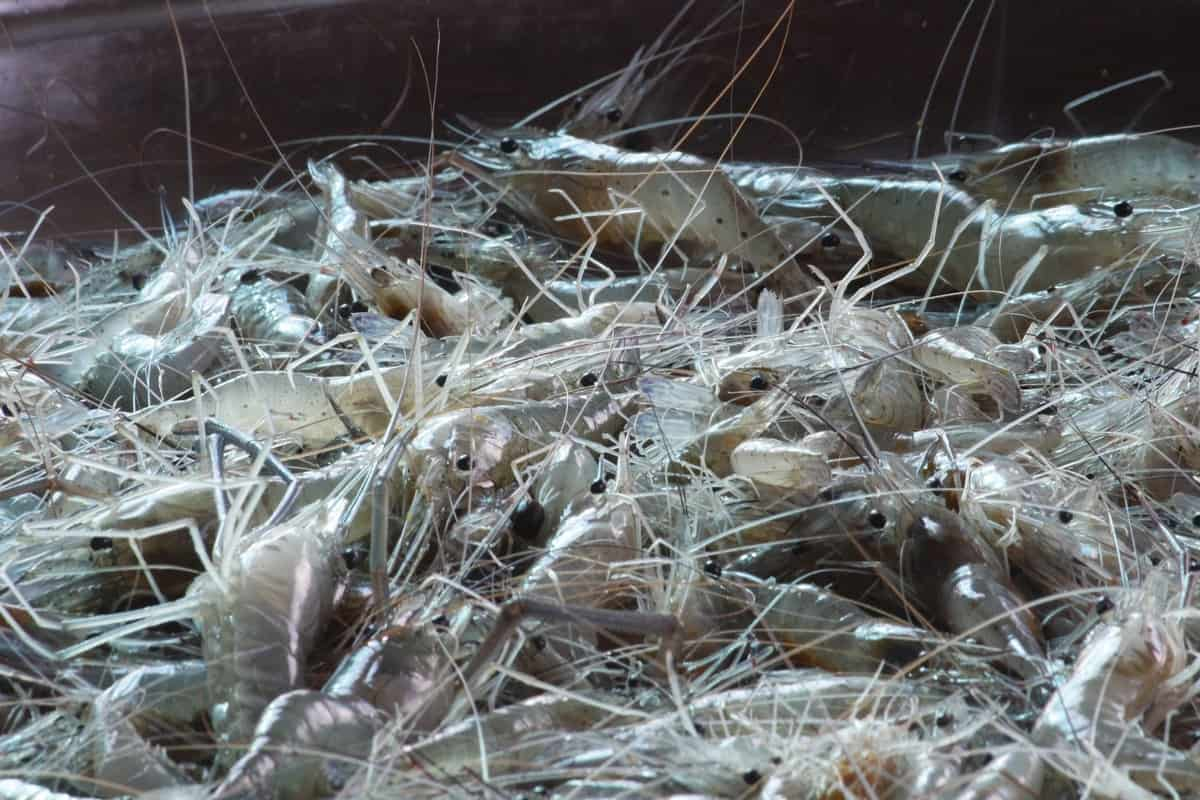
Feed regularly and appropriately
Shrimp need a constant food supply to grow well and achieve optimum FCRs. Therefore, feed them at regular intervals throughout the day using appropriate feeding rates based on age and body size. Many types of shrimp feeds are available on the market, and farmers must choose a feed appropriate for their specific culture. They should also consider using fortified feeds to improve growth and nutrition.
Keep shrimp healthy
Maintaining good health is crucial for good FCR. Shrimp that are stressed or sick will not eat as much and have a lower feed conversion ratio. Therefore, it is important to keep shrimp healthy by providing them with clean water, good food, and appropriate living conditions. Shrimp need to be well-fed to grow quickly and achieve a good FCR. Avoid overfeeding, but provide enough food so that shrimp can reach their maximum growth potential.
Minimize stress
Stress can have a negative impact on shrimp health and growth, which in turn can lead to a lower FCR. Take steps to minimize stress in your shrimp culture system, such as providing hiding places and keeping stocking densities low.
Preparing the pond thoroughly
Shrimp farmers should prepare their ponds before stocking them with shrimp. The pond bottom should be level and free of debris, and the sides should be sloped to prevent escape. In addition, the water in the pond should be clean and clear, with no visible algae or other aquatic plants.
Water quality management
Water quality is critical to shrimp culture, and farmers must take measures to ensure that their ponds have the right levels of dissolved oxygen, pH, temperature, and salinity. They can do this by regularly testing the water and adjusting it as needed.
Should not feed the shrimp too late
Shrimp farmers should avoid feeding them too late in the day, as this can lead to digestive problems and decreased growth. Instead, they should aim to feed their shrimp early in the day so that they have time to digest it before nightfall.
Adjust the food properly
The amount of food that shrimp need will change as they grow, so farmers must adjust their feeding accordingly. They should also consider the type of food being fed, as some foods are more nutritious than others. Finally, good management practices are essential for maximizing growth rate and minimizing FCR. Some good management practices include maintaining proper feeding schedules, monitoring shrimp health closely, and keeping detailed production records.
In case you missed it: 16 Key Rules for Effective Shrimp/Prawn Farm Management: From Planning to Reduce Production Cost
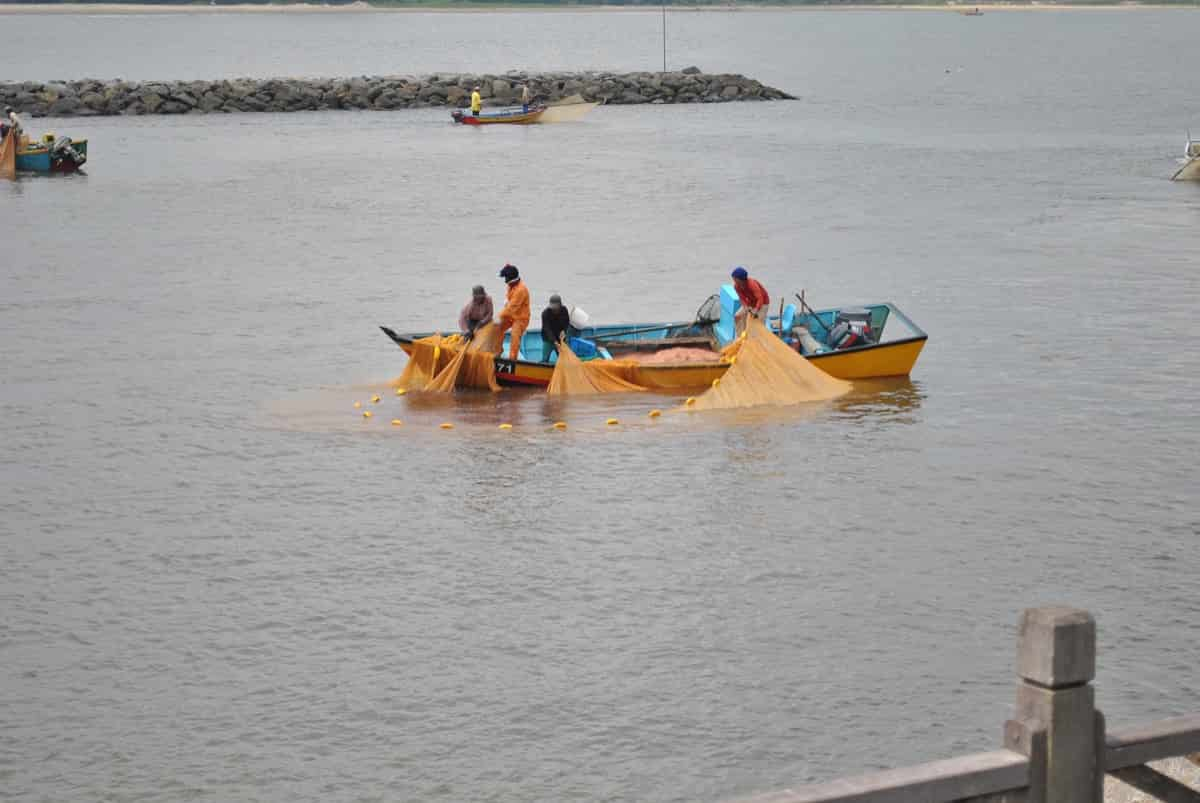
Factors can lead to substantial improvements in FCR
Feed management is one of the most important aspects of shrimp culture, and the Feed Conversion Ratio (FCR) is a key metric that farmers use to measure their success. Many factors affect the FCR, and it can be difficult to optimize all of them. However, there are some simple techniques that shrimp farmers can use to improve their FCR. Several factors impact FCR, including water temperature, feeding frequency, stocking density, aeration, and feeding method. Therefore, optimizing these factors can lead to substantial improvements in FCR.
Water temperature
Warmer water temperatures generally result in higher growth rates and feed consumption levels in shrimp, leading to higher FCRs. Conversely, cooler water temperatures typically result in slower growth rates and lower feed consumption levels, leading to lower FCRs; as such, maintaining optimal water temperatures is essential for maximizing growth and minimizing Feed costs.
Feeding frequency
Shrimp must be fed frequently enough to meet their nutritional requirements but not so frequently that excess food is wasted. Overfeeding leads to higher FCRs due to increased levels of uneaten food which can foul the water quality and reduce growth rates. Finally, it is also important to keep track of the shrimp’s growth and ensure they get enough food based on their size.
If the shrimp are not growing as quickly as they should be, then they may not be getting enough food, and their FCR will suffer. Therefore, by keeping track of these parameters and ensuring that the shrimp are well-fed, farmers can significantly improve their FCR.
Different shrimp species and their FCR
There are hundreds of shrimp species, and they vary in their FCR. Some shrimp have a very high FCR, while others have a lower FCR. Below is the list of the more popular shrimp species and their average FCR:
| Shrimp Species | Average FCR |
| Black Tiger | 2.0-2.5 |
| Blue Tiger | 1.8-2.2 |
| Brown Tiger | 1.4-1.8 |
| Giant River Prawn | 1.4-1.7 |
| Red Cherry Shrimp | 0.9-1.2 |
| Whiteleg Shrimp | 1.3-1.6 |
| Yellowtail Shrimp | 1.4-1.9 |
What are the key factors that affect FCR in shrimp culture?
Several key factors affect FCR in shrimp culture. One of the most important is the quality of the feed. Shrimp require a high-quality diet to grow and thrive, so it’s important to choose a feed that meets their needs. Another key factor is the stocking density. If shrimp are stocked too densely, they will compete for food and may not get enough to eat, resulting in poor growth and lower FCR. Stocking density is the number of shrimp per unit area of the pond bottom.
It varies with the size of the shrimp and ranges from 10 to 40 shrimp/m2 for small postlarvae (< 1 gram) to 2 to 10 shrimp/m2 for large adults (> 30 grams). Finally, water quality is also a key factor. Poor water quality can lead to stress and disease, impacting FCR. A second key factor is a feeding method. In ponds where shrimp are hand-fed, FCR is usually lower than in ponds where they are fed with an automatic feeder.
In case you missed it: Shrimp Farming in USA: How to Start, A Step-by-Step Guide for Beginners
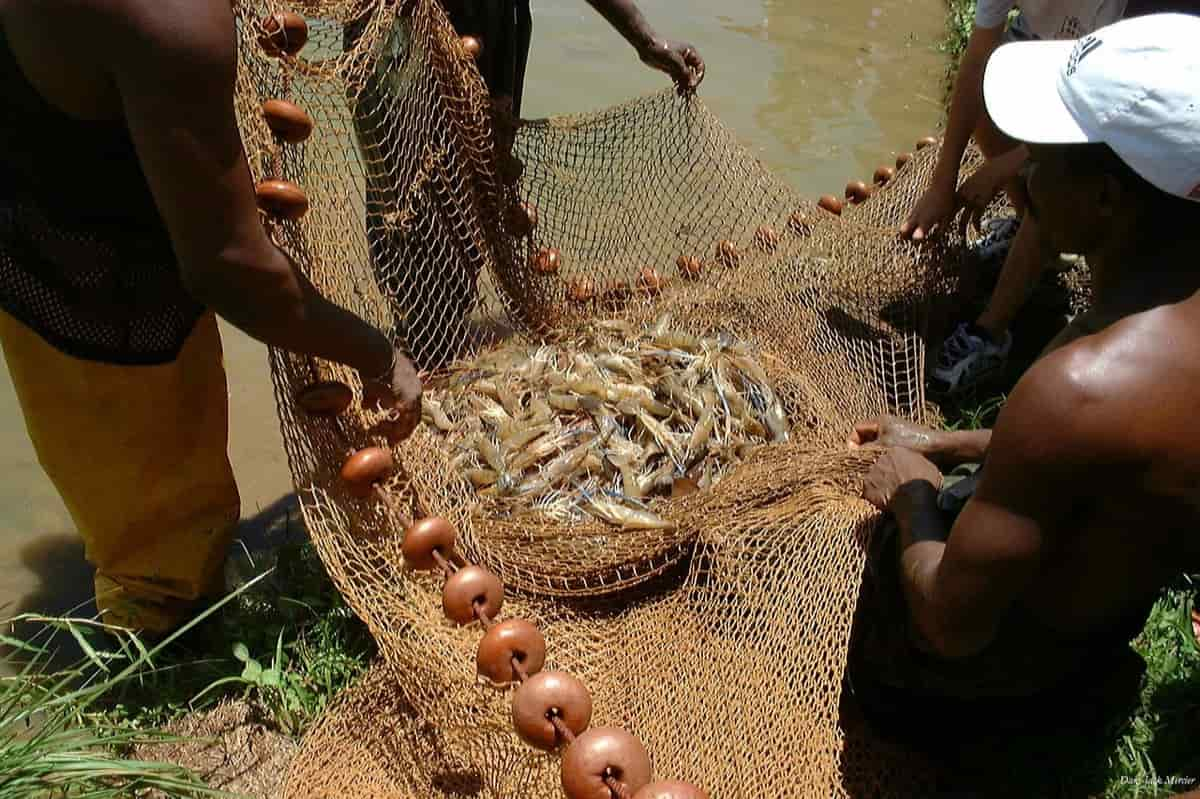
The third key factor is water quality. Poor water quality can lead to low oxygen levels, which can stress the shrimp and cause them to eat less. The fourth key factor is temperature. Shrimp are cold-blooded animals, and their metabolism slows down at lower temperatures. This means that they need less food, and their FCR improves. Finally, the fifth key factor is disease. The disease can stress the shrimp and cause them to eat less, leading to a lower FCR.
Some other factors are;
- Temperature: In tropical climates, shrimp can be grown throughout the year. However, FCR is significantly affected by water temperature. The optimum temperature for shrimp growth is 27-28°C. Above this temperature is a decrease in weight gain and feed intake and an increase in metabolism and respiration. The result is a decrease in FCR.
- Salinity: The effect of salinity on FCR is controversial. Some studies have shown that shrimp grown in low-salinity water (<10 ppt) have a better FCR than those grown in high-salinity water (>15 ppt), while other studies have shown no difference between the two salinity levels.
- Oxygen: Oxygen plays a vital role in shrimp metabolism and growth. A lack of oxygen levels can lead to a decrease in feed intake and an increase in metabolism, resulting in a decrease in FCR.
Why is a good FCR so important?
- It measures the efficiency of feed conversion into shrimp biomass. A low FCR means less feed is required to produce a given amount of shrimp, leading to lower production costs.
- A good FCR also indicates that the shrimp are growing well and are healthy. Shrimp with a poor FCR tend to be smaller and have poorer health.
- A good FCR is also an indicator of water quality. For example, shrimp with a poor FCR tend to excrete more ammonia, which can lead to water quality problems.
Techniques will help you achieve a better shrimp FCR
Select the right shrimp species
Not all shrimp are equal regarding feed conversion ratios. Some species are more efficient than others. So do your research and select a shrimp breed with a good track record for FCR.
Use quality feeds
Like with any other animal, the quality of the feed impacts the FCR. Be sure to use high-quality feeds that are tailored for shrimp. This will ensure that your shrimp get all the nutrients they need and minimize waste.
Optimize stocking density
Stocking density is one of the biggest factors impacting FCR. If your pond is too crowded, the shrimp will have to compete for food, leading to poorer FCRs. On the other hand, if your pond is too sparsely stocked, there will be less waste and uneaten food, but the individual shrimp will grow slower due to lack of competition, leading to poorer FCRs. Find that happy medium where your shrimp have enough room to grow but aren’t so spread out that they’re not getting enough food.
Keep your ponds clean and free of debris
A clean pond is essential for good water quality and healthy shrimp growth rates – both of which impact FCRs.
In case you missed it: Making 60 Lakh Per Year from Prawn/Shrimp Farming – A Success Story of an Aqua Farmer
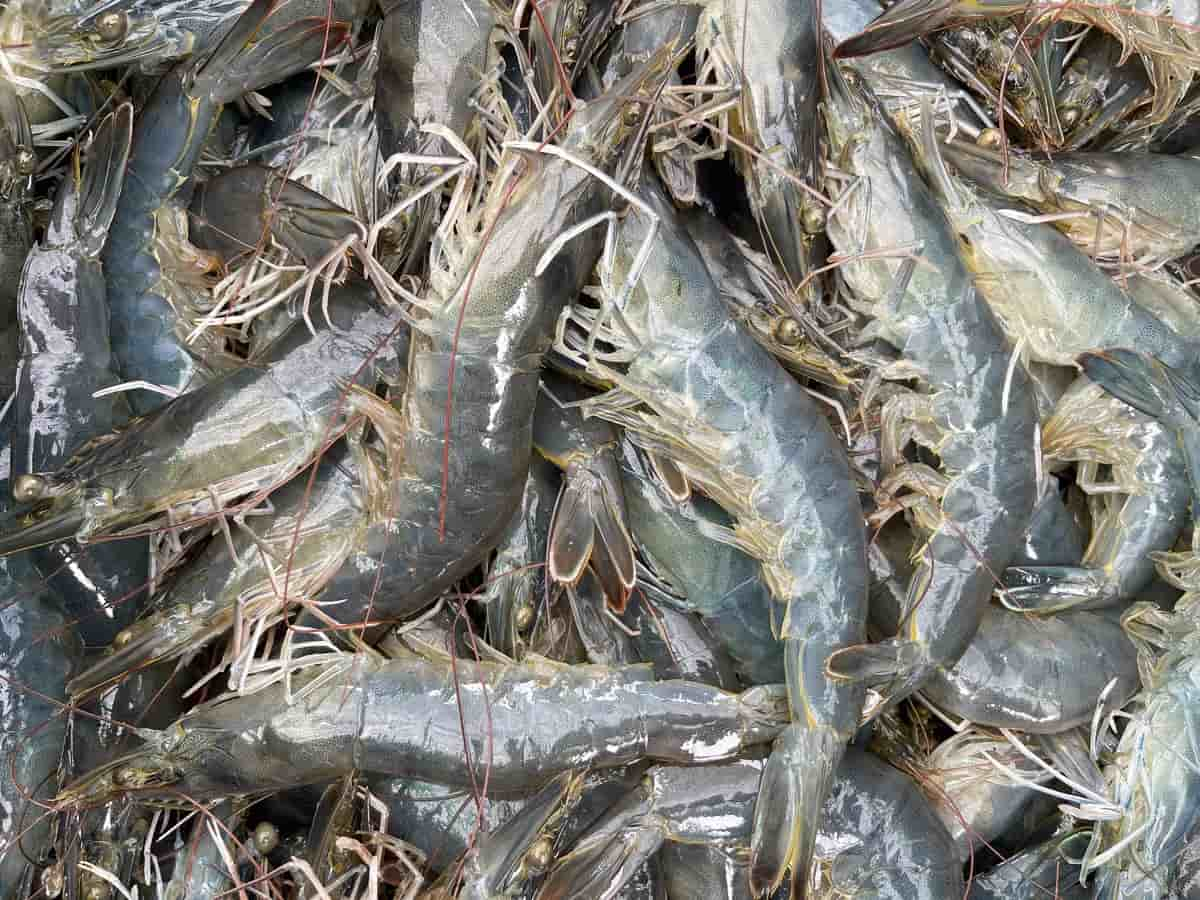
How do you calculate FCR in shrimp farming?
In aquaculture, the FCR is calculated as follows: FCR = Feed given / Animal weight gain. A few key secrets and tips can help you improve your shrimp FCR. Firstly, ensuring that your shrimp are getting enough food is important. Secondly, you should maintain a clean and healthy environment for your shrimp.
This means keeping the water quality high and providing them with plenty of oxygen. Lastly, it is important to monitor your shrimp closely and make changes to their diet or environment if necessary. These tips can help improve your shrimp FCR and keep your shrimp healthy and happy.
Some methods to calculate FCR in shrimp farming;
There are two main methods for calculating FCR in shrimp farming: the weight-gain method and the feed-consumption method.
- The weight-gain method measures the amount of shrimp biomass gained over a certain period, divided by the amount of feed consumed during that same period. This method is most accurate over multiple production cycles, as it can account for any variability in growth rates or feed intake.
- The feed-consumption method involves measuring the feed fed to the shrimp minus any uneaten food and excreted waste. This method can be done daily and is often used to monitor real-time FCR. However, it can be less accurate than the weight-gain method, as it does not account for variations in growth rates or shrimp body composition.
What is the ideal FCR in shrimp culture?
An ideal FCR always produces healthy shrimp, model growth rate, and clean pond bottom conditions. However, only the superior feed quality can achieve an FCR of about 1.2. An FCR as low as 1.2 has been achieved, but farmers obtain FCRs higher than 2.2. Different methods are used to achieve this ratio, but the important thing is to ensure that your shrimp have access to a high-quality diet and plenty of clean water.
Conclusion
The feed conversion ratio (FCR) is a key performance indicator in shrimp culture. A high FCR means that more feed is being converted into shrimp biomass, while a low FCR indicates that less feed is being utilized. A good FCR is essential to efficient shrimp farming. A low FCR means less feed is required to produce a given amount of shrimp meat, reducing production costs and increasing profits.
- How to Make Houseplants Bushy: Effective Tips and Ideas
- Innovative Strategies for Boosting Coconut Pollination and Yield
- Pollination Strategies for Maximum Pumpkin Yield
- The Complete Guide to Chicken Fattening: Strategies for Maximum Growth
- Natural Solutions for Tulip Problems: 100% Effective Remedies for Leaf and Bulb-Related Issues
- Revolutionizing Citrus Preservation: Towards a Healthier, Greener Future
- Natural Solutions for Peony Leaf and Flower Problems: 100% Effective Remedies
- Maximizing Profits with Avocado Contract Farming in India: A Comprehensive Guide
- Natural Solutions for Hydrangea Problems: 100% Effective Remedies for Leaf and Flowers
- The Ultimate Guide to Choosing the Perfect Foliage Friend: Bringing Life Indoors
- From Sunlight to Sustainability: 15 Ways to Use Solar Technology in Agriculture
- The Ultimate Guide to Dong Tao Chicken: Exploring from History to Raising
- The Eco-Friendly Makeover: How to Convert Your Unused Swimming Pool into a Fish Pond
- Mastering the Art of Delaware Chicken Farming: Essentials for Healthy Backyard Flocks
- 20 Best Homemade Fertilizers for Money Plant: DIY Recipes and Application Methods
- How to Craft a Comprehensive Free-Range Chicken Farming Business Plan
- Brighten Your Flock: Raising Easter Egger Chickens for Beauty and Bounty
- How to Optimize Your Poultry Egg Farm Business Plan with These Strategies
- Subsidy for Spirulina Cultivation: How Indian Government Schemes Encouraging Spirulina Farmers
- Ultimate Guide to Raising Dominique Chickens: Breeding, Feeding, Egg-Production, and Care
- Mastering the Art of Raising Jersey Giant Chickens: Care, Feeding, and More
- Ultimate Guide to Raising Legbar Chickens: Breeding, Farming Practices, Diet, Egg-Production
- How to Raise Welsummer Chickens: A Comprehensive Guide for Beginners
- How to Protect Indoor Plants in Winter: A Comprehensive Guide
- Ultimate Guide to Grow Bag Gardening: Tips, Tricks, and Planting Ideas for Urban Gardeners
- Guide to Lotus Cultivation: How to Propagate, Plant, Grow, Care, Cost, and Profit
- Agriculture Drone Subsidy Scheme: Government Kisan Subsidy, License, and How to Apply Online
- Ultimate Guide to Raising Araucana Chickens: Breed Profile, Farming Economics, Diet, and Care
- Bringing Hydroponics to Classroom: Importance, Benefits of Learning for School Students
- Ultimate Guide to Raising Polish Chickens: Breed Profile, Farming Economics, Diet, and Care
- Ultimate Guide to Raising Australorp Chickens: Profile, Farming Economics, Egg Production, Diet, and Care
- Silkie Chicken Farming: Raising Practices, Varieties, Egg Production, Diet, and Care
- Sussex Chicken Farming: Raising Practices, Varieties, Egg Production, Diet and Care
- Homemade Feed Formulations for Livestock: Discover Cost-effective Starter to Finisher Feed Recipes
- 20 Best Pig Weight Gain Supplements: Top Swine Weight Gain Formulas
- Ultimate Guide to Elderberry Farming: Propagation, Planting, Yield, Cost, and Profit